Last year, I found myself constantly dragging through my workday. As someone who spends hours researching and writing, I needed something to help me stay on top of my game. That’s when I stumbled upon something fascinating: the world of functional mushrooms.

No, not the kind you put on pizza! I’m talking about incredible fungi that have been used for thousands of years in traditional practices. What I discovered changed my daily routine forever.
Let’s explore these fascinating fungi that are creating buzz in wellness circles:
1. Lion’s Mane: The Majestic Mushroom
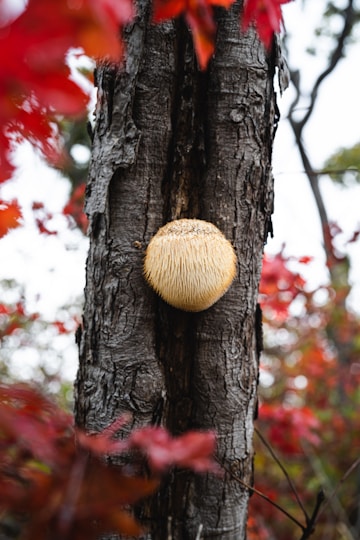
This fluffy white mushroom looks like a lion’s mane (hence the name!). It’s become super popular among students and professionals who want to stay sharp during long work days. Fun fact: Buddhist monks traditionally used it during meditation practices.
Lion’s Mane (Hericium erinaceus) contains bioactive compounds called hericenones and erinacines that have been studied for their ability to stimulate nerve growth factor (NGF) production in the brain. This makes it particularly interesting for cognitive support.
Research suggests that Lion’s Mane may help maintain focus during demanding mental tasks and support overall brain health. In addition to cognitive benefits, this mushroom has been traditionally used to support digestive health and contains immune-supporting beta-glucans. You’ll find it available in various forms including capsules, powders, and even as a delicious culinary mushroom with a taste reminiscent of lobster or crab.
2. Reishi: The Chill Champion
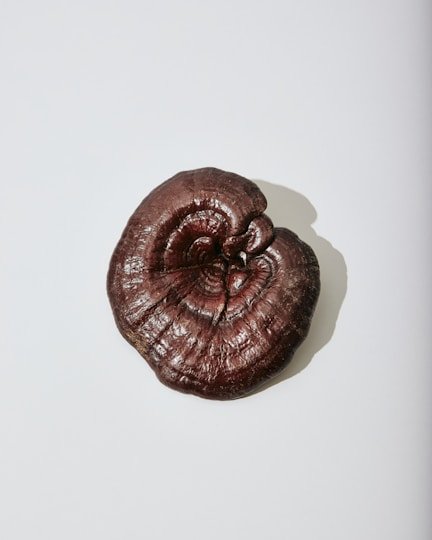
Known as the “mushroom of calmness” in Eastern traditions, Reishi has been used for centuries by those seeking balance in their busy lives.
It’s perfect for anyone looking to maintain their zen during hectic days.
Reishi (Ganoderma lucidum) has earned its nickname as the “mushroom of immortality” in traditional Chinese medicine, where it was reserved for royalty for over 2,000 years. This stunning red-varnished, woody mushroom contains triterpenes, polysaccharides, and other bioactive compounds that have been studied for their adaptogenic properties. These compounds may help the body adapt to stress and maintain equilibrium. Modern research is exploring Reishi’s potential role in supporting healthy sleep cycles, balanced immune function, and cardiovascular health. The mushroom has a bitter taste, which is why it’s typically consumed as a tea, tincture, or in capsule form rather than as a culinary ingredient.
3. Cordyceps: The Energy Enthusiast
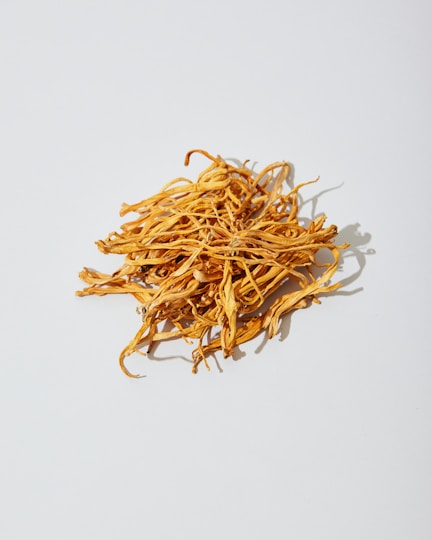
This fascinating fungus has an interesting origin story – it was discovered by high-altitude herders in the Himalayas who noticed their animals became more energetic after grazing on it.
Today, it’s popular among fitness enthusiasts and active professionals.
Cordyceps (primarily Cordyceps militaris in supplements) has a truly unique lifecycle – in the wild, it parasitizes insect larvae before sprouting from their bodies. Don’t worry though, commercial Cordyceps is typically lab-grown on sterile grain. This mushroom contains cordycepin and adenosine, compounds that may support cellular energy production by potentially enhancing ATP (adenosine triphosphate) synthesis. Studies suggest Cordyceps may help improve oxygen utilization, making it particularly valuable for endurance athletes and those looking to combat fatigue. Traditional Tibetan medicine used this fungus for vitality, respiratory support, and kidney health. Modern research is also investigating its potential benefits for sexual health and hormonal balance.
4. Turkey Tail: The Beautiful Supporter
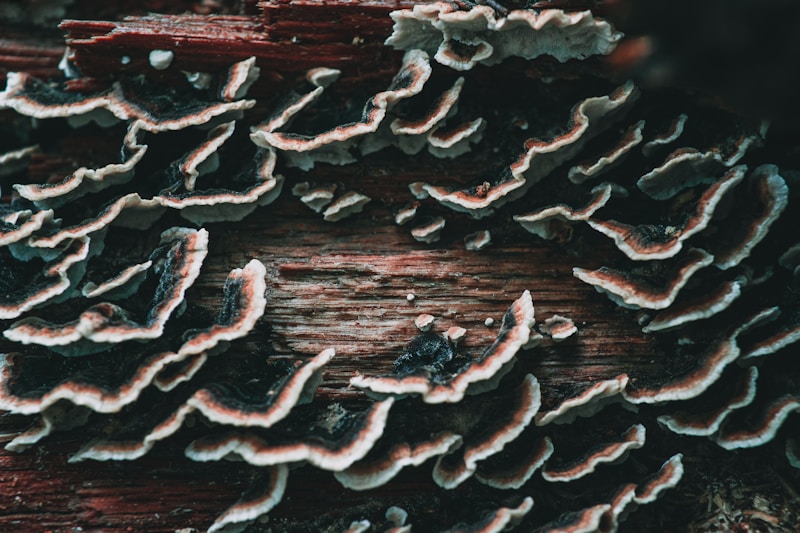
Named for its stunning turkey tail-like colors, this mushroom is one of the most researched fungi in modern studies. It’s been a staple in traditional practices for centuries.
Turkey Tail (Trametes versicolor) is easily identified by its fan-shaped, multi-colored rings resembling the tail feathers of wild turkeys. It contains two powerful polysaccharides: Polysaccharide-K (PSK) and Polysaccharide Peptide (PSP), which have been extensively studied for their immune-supporting properties. In fact, PSK has been used in integrative settings in Japan since the 1970s alongside traditional approaches for immune support. Turkey Tail also contains prebiotics that may help support a healthy gut microbiome, which is increasingly recognized as important for overall wellness. This mushroom is rich in antioxidants including phenols and flavonoids, which help combat oxidative stress. It’s typically consumed as a tea, powder, or in capsule form.
5. Shiitake: More Than Just Delicious
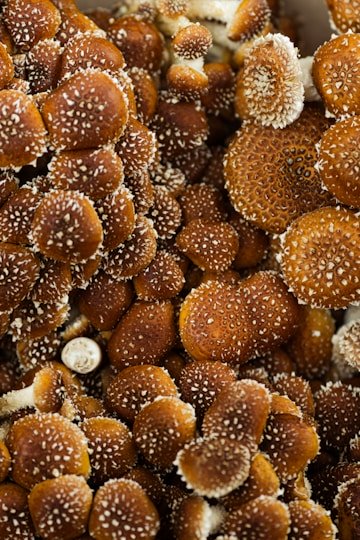
You might know it from your favorite Asian dishes, but Shiitake has been used in traditional practices for thousands of years. Modern research continues to explore its beneficial properties.
Shiitake (Lentinula edodes) has been cultivated in Asia for over 1,000 years and ranks as the second most commonly consumed mushroom worldwide. It contains a unique polysaccharide called lentinan that has been studied for its potential to modulate immune function. Shiitake also contains eritadenine, a compound that may support healthy cholesterol levels, and various minerals including copper, zinc, manganese, selenium, and B vitamins. The mushroom contains natural glutamate compounds that create the savory “umami” flavor that makes it so popular in cuisine. For wellness benefits, the mushroom stem contains higher concentrations of beneficial compounds than the cap. When dried in sunlight, Shiitake’s vitamin D2 content increases dramatically, making it a rare non-animal source of this important nutrient.
6. Maitake: The Dancing Mushroom
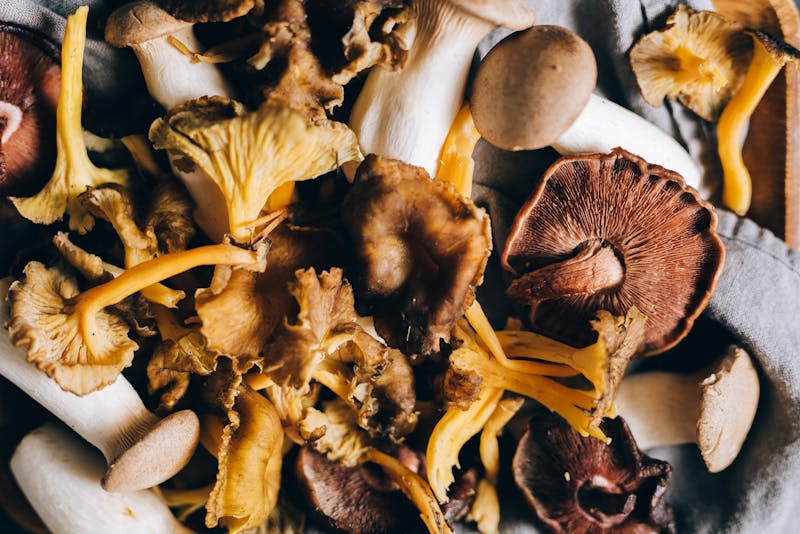
Called the “dancing mushroom” because people would dance with joy upon finding it in the wild, Maitake is rich in beneficial compounds that support overall wellness.
Maitake (Grifola frondosa) earned its “dancing mushroom” nickname not only because of the joy of finding it, but also because its frilly clusters resemble dancing butterflies. This mushroom contains a specialized beta-glucan called D-fraction that has been studied for its potential to modulate immune function and support cellular health. Maitake may help maintain healthy glucose metabolism through compounds that support insulin sensitivity. This adaptogenic mushroom has been traditionally used to help the body manage physical and emotional stress. Rich in antioxidants, B vitamins, copper, potassium, amino acids, and fiber, Maitake offers nutritional benefits beyond its functional properties. It has a rich, earthy flavor that makes it a prized culinary ingredient in addition to its use in supplements.
7. Chaga: The Northern Treasure
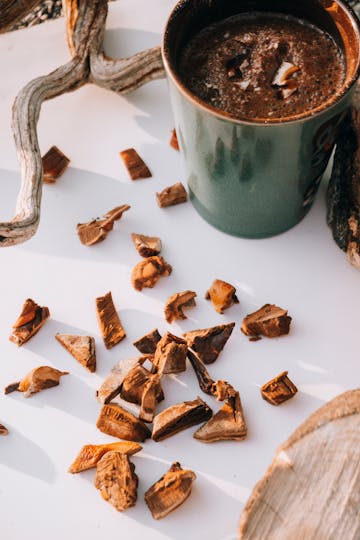
This mushroom grows on birch trees in cold climates and has been used by northern cultures for centuries. It’s packed with antioxidant properties.
Chaga (Inonotus obliquus) isn’t your typical-looking mushroom. This hard, charcoal-like growth is actually a sterile conk made of mycelium that can thrive in extremely cold environments, primarily on birch trees in northern regions of Russia, Korea, Eastern and Northern Europe, and North America. Chaga contains one of the highest ORAC scores (a measure of antioxidant capacity) of any natural food, largely due to its high content of melanin and superoxide dismutase (SOD). It also contains betulinic acid, a compound derived from its birch tree host that has been studied for its potential cellular health benefits. Traditional Siberian and Russian cultures used Chaga as a folk remedy and brewed it as a tea for overall vitality. The mushroom has a slightly bitter, vanilla-like flavor profile when prepared as a tea.
8. Royal Sun Agaricus: The Brazilian Beauty
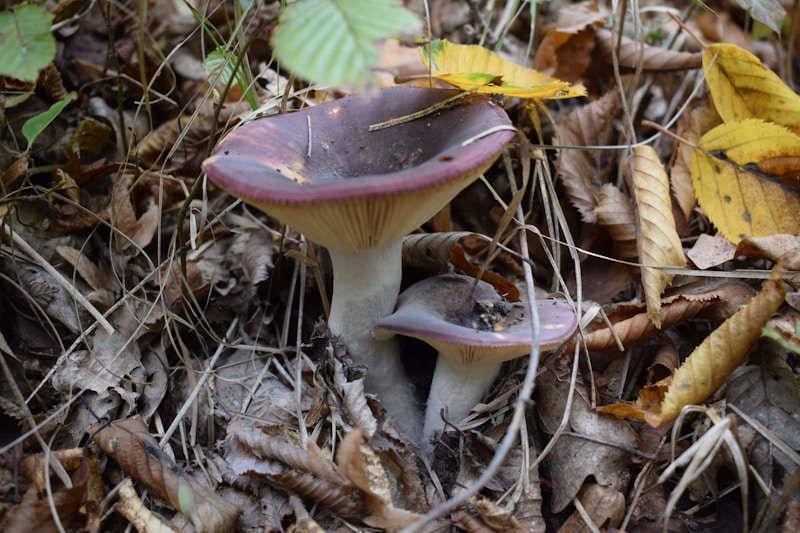
Popular in Brazil, this mushroom has gained attention worldwide for its traditional uses in supporting overall wellness.
Royal Sun Agaricus (Agaricus blazei Murill or Agaricus subrufescens) was discovered in Brazil in the 1960s but gained prominence when researchers noticed the unusual longevity and wellness of the people in the Brazilian village where it commonly grew. This mushroom contains beta-glucans with a unique 1,3/1,6 linkage structure that has been studied for its potential to modulate immune function. It also contains ergosterol, a precursor to vitamin D2, and polyphenols with antioxidant properties. Royal Sun Agaricus has historically been used in Brazil for overall vitality and wellness support. It has a pleasant, almond-like aroma and sweet taste, making it more palatable than some other functional mushrooms. In Japan, where it’s called “Himematsutake,” it’s highly valued and has been incorporated into various wellness protocols.
9. White Button: The Humble Powerhouse
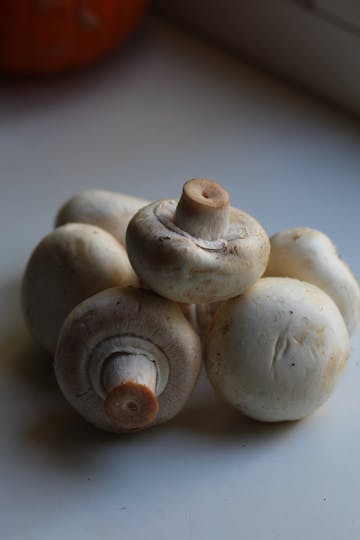
Don’t underestimate this common mushroom! Research suggests it’s packed with beneficial compounds that support overall health.
White Button mushrooms (Agaricus bisporus) are the same species as cremini and portobello mushrooms, just harvested at different stages of maturity. Despite being the most commonly consumed mushroom in the Western world, their health benefits are often overlooked. These everyday fungi contain ergothioneine, a powerful antioxidant that the human body doesn’t produce naturally but can absorb and utilize. They’re one of the few non-animal food sources that naturally contain vitamin D, which can be increased significantly when exposed to UV light before or after harvesting. Button mushrooms contain polysaccharides, particularly beta-glucans, that support immune function. They’re also rich in B vitamins, selenium, potassium, and copper. Recent research suggests they may help support healthy gut bacteria and promote balanced aromatase activity in the body.
10. Black Fungus: The Ancient Wonder
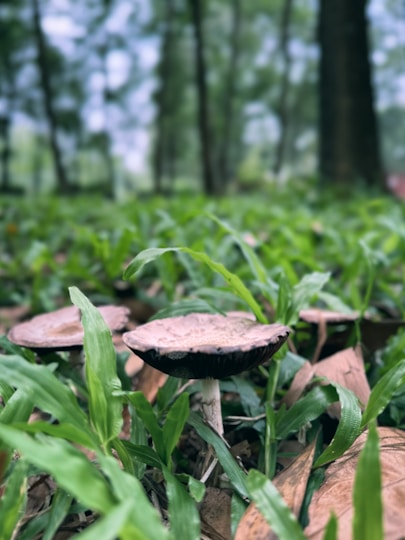
Used in traditional Chinese practices for centuries, Black Fungus is making a comeback in modern wellness routines.
Black Fungus (Auricularia auricula or wood ear mushroom) has a distinctive ear-like appearance and gelatinous texture. It’s been used in Traditional Chinese Medicine for over 2,000 years and is believed to support circulatory health. This mushroom contains unique polysaccharides with potential antioxidant properties and has been studied for its ability to support balanced platelet aggregation and healthy blood flow. Black Fungus is rich in dietary fiber, particularly soluble fiber, which may help support heart health and digestive regularity. It contains a compound called adenosine that may assist in maintaining cardiovascular function. In Eastern cuisines, it’s valued for both its health benefits and its ability to absorb flavors while adding a pleasant crunchy texture to dishes. The mushroom is also a good source of iron and other minerals that support overall wellness.
Why These Mushrooms Are Trending Now
The wellness world is experiencing a fungi renaissance. More people are discovering these natural wonders and incorporating them into their daily routines.
The best part? Modern science is catching up with ancient wisdom, researching these fascinating organisms.
Several factors are driving the current mushroom boom. First, growing interest in traditional practices has led to rediscovery of these time-tested natural supports. Second, advances in cultivation techniques have made these previously rare mushrooms more accessible and affordable. Third, ongoing scientific research continues to validate many traditional uses while uncovering new potential benefits. Finally, innovative delivery methods like convenient capsules, powders, and extracts have made it easier than ever to incorporate these fungi into modern lifestyles.
What to Look For
If you’re interested in trying functional mushrooms, here are some tips:
- Look for products that use quality ingredients
- Check for transparent sourcing
- Consider supplements that combine multiple species for a comprehensive approach
- Make sure the product comes from a reputable manufacturer
- Look for products that specify which part of the mushroom is used (mycelium, fruiting body, or both)
- Verify that the product has been tested for purity and potency
- For extracted products, seek out information about the extraction method (hot water, alcohol, or dual extraction)
- Consider products that mention standardization of active compounds
The Bottom Line
These amazing mushrooms have been used traditionally for thousands of years, and now they’re having their moment in the modern wellness world. Whether you’re looking to support your active lifestyle or maintain your daily balance, these fungi are worth learning about.
What makes functional mushrooms particularly exciting is their adaptogenic nature – they may help the body respond to various stressors and support overall balance rather than targeting just one specific function. Their complex composition of bioactive compounds works synergistically in ways that modern science is still exploring. As research continues to advance, we’re likely to discover even more about these fascinating fungi and their potential benefits for human wellness.
Want to know more about these fascinating fungi? Check out ELITE 10X to learn about a premium mushroom complex that combines all these traditional mushrooms in one convenient supplement.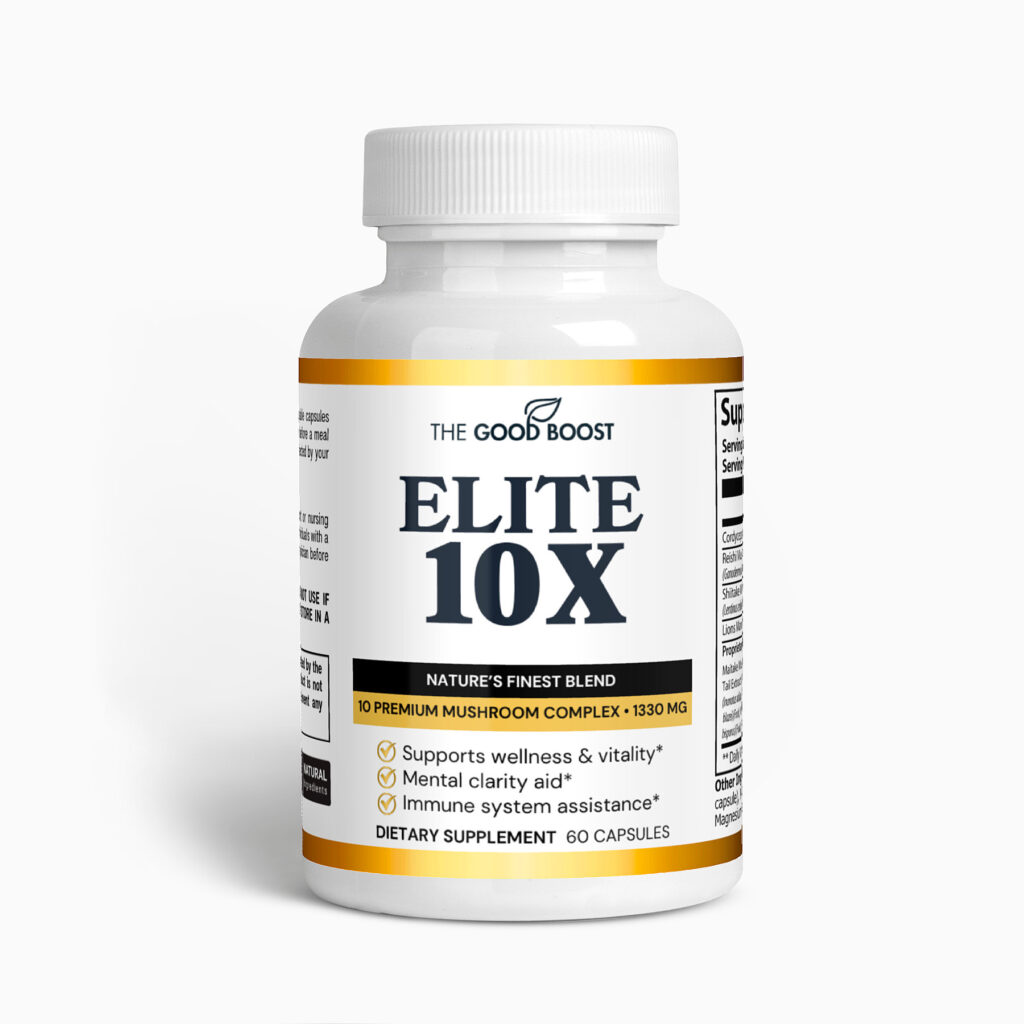
Note: This article is for informational purposes only. Everyone’s body is different, so results may vary.